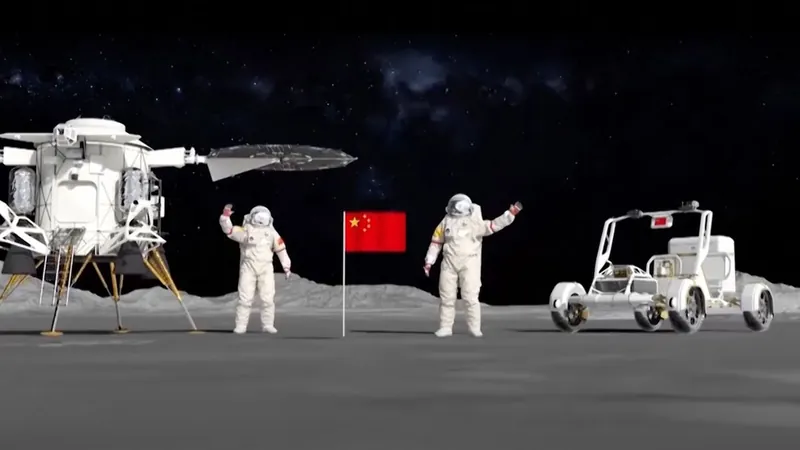
China's Ambitious Moon Mission: Astronauts Set to Land on the Lunar Surface by 2030
2024-11-27
Author: Liam
In a groundbreaking announcement, China’s human spaceflight agency has unveiled its ambitious plans to send astronauts to the Moon by the year 2030. This vision was solidified with the recent release of a captivating promotional video by the China Manned Space Agency (CMSA) on November 21, highlighting both the progress made on lunar hardware and animated simulations of future activities.
The mission will depend upon the launch of two Long March 10 rockets, which are currently under development. The first rocket will carry a crewed spacecraft named Mengzhou, while the second will launch a lunar landing stack known as Lanyue. Once both spacecraft reach lunar orbit, they will dock together, allowing astronauts to transfer to Lanyue for their descent onto the Moon's surface.
The video showcases stunning visuals of Lanyue successfully landing on the moon while deploying a lunar rover. It features astronauts operating the rover and navigating planned routes across the lunar landscape, which could provide invaluable information for future exploration and potential colonization.
In addition to the lunar mission's visualizations, the CMSA included significant testing achievements in the video. This includes a hotfire test of the Long March 10’s first stage and a parachute deployment test designed for the spacecraft recovery process. A critical separation test of a Lanyue prototype has also been successfully completed, an essential milestone in ensuring the mission's success.
Another exciting aspect of China's lunar ambitions is the lunar extravehicular suits that astronauts will wear during their exploration on the Moon. These developments indicate a robust commitment to not just reach the Moon, but to equip astronauts with the necessary tools and technology to operate safely and effectively on its surface.
A highlight of the video is a detailed diagram of the Wenchang Satellite Launch Center located on Hainan Island. This facility, which currently supports the Long March 5 series, is undergoing significant expansion to accommodate the larger Long March 10 rockets and the future Long March 9 super heavy-lift launcher, reminiscent of SpaceX's Starship in size and capability.
As tensions in the space race mount, especially with NASA's recent warnings about China's progressing lunar ambitions, the world watches with bated breath to see if China can achieve this historic milestone. With definitive timelines set and a clear roadmap established, China's upcoming lunar mission could open a new chapter in human space exploration, reigniting debates about international collaboration or competition beyond our planet.
Stay tuned as we follow China's monumental steps towards its goal of landing astronauts on the Moon by 2030! Will they succeed, or will unforeseen challenges arise?









 Brasil (PT)
Brasil (PT)
 Canada (EN)
Canada (EN)
 Chile (ES)
Chile (ES)
 España (ES)
España (ES)
 France (FR)
France (FR)
 Hong Kong (EN)
Hong Kong (EN)
 Italia (IT)
Italia (IT)
 日本 (JA)
日本 (JA)
 Magyarország (HU)
Magyarország (HU)
 Norge (NO)
Norge (NO)
 Polska (PL)
Polska (PL)
 Schweiz (DE)
Schweiz (DE)
 Singapore (EN)
Singapore (EN)
 Sverige (SV)
Sverige (SV)
 Suomi (FI)
Suomi (FI)
 Türkiye (TR)
Türkiye (TR)